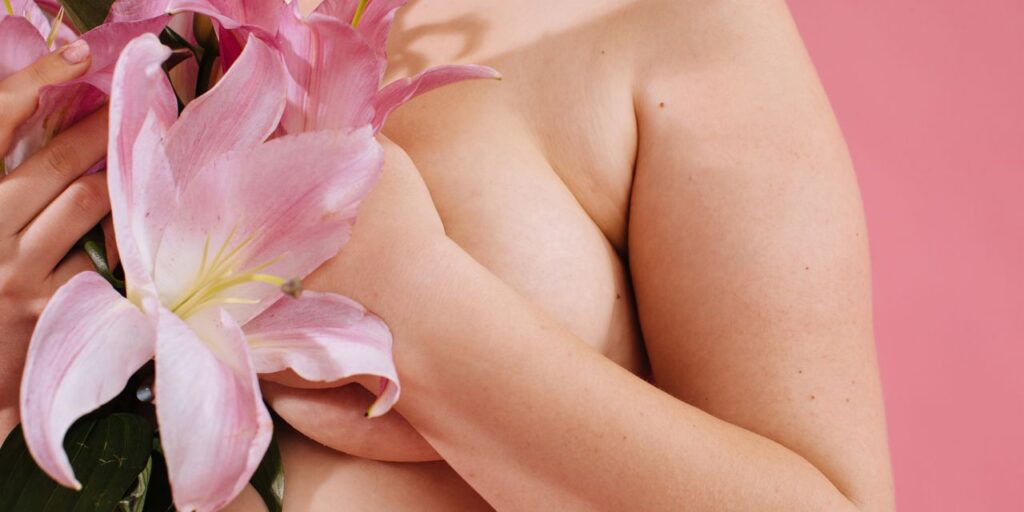Take note: In young people, especially, breast cancer lumps can look similar to fibrocystic breast changes, or noncancerous lumpy or ropelike breast texture caused by hormonal changes around your period. This is extremely common, affecting approximately 50% of women between the ages of 20 and 50. So it’s important to pay attention to whether any lump seems to change with your cycle, Dr. Calfa says: “If it doesn’t go away after your period ends, within a couple weeks, be sure to seek an evaluation from your doctor.”
2. Breast asymmetry (that’s different from your norm)
Plenty of people naturally have one boob that’s bigger or differently shaped than the other—and that’s totally fine. But if you notice a new-to-you form of asymmetry between your breasts, that may be a signal of breast cancer below the surface, Dr. Calfa says. After all, only about 2% to 11% of breast cancers are bilateral—the rest crop up in a single boob.
This might look like one breast suddenly being a cup size larger than the other (again, despite this not previously being the case for you), one breast that seems to stay closer to your chest wall (while the other dangles more), or new asymmetry in terms of how your breast skin or nipples look or feel.
3. Changes in breast shape and contour, like dimpling or thickening
Your breast shape will change naturally over time. After all, your breasts at 20 are not what you’ll see at 50 (thanks, gravity!), especially if you’ve been pregnant or nursed a baby.
That said, it’s time to talk to a doctor when those changes seem to have happened quickly and don’t seem to be associated with your menstrual cycle, significant weight gain or loss, pregnancy, or breastfeeding. For example, Dr. Gary says changes in the contour of your breast, such as dimpling, could be an early sign of breast cancer. Also key to note is thickening or swelling of the breast, even if you do not feel a lump. Dr. Gary says these changes may become more apparent as cancers grow inside the tissues.
4. Nipple changes or discharge
Another potential early sign of breast cancer is certain changes to your nipples, such as nipples that turn inward, pull to one side, or change direction. Inflammation around the nipple, scaly skin, crusting, and itchiness or a burning sensation also warrant a convo with your doctor, particularly when it occurs in only one nipple, Dr. Calfa says.


